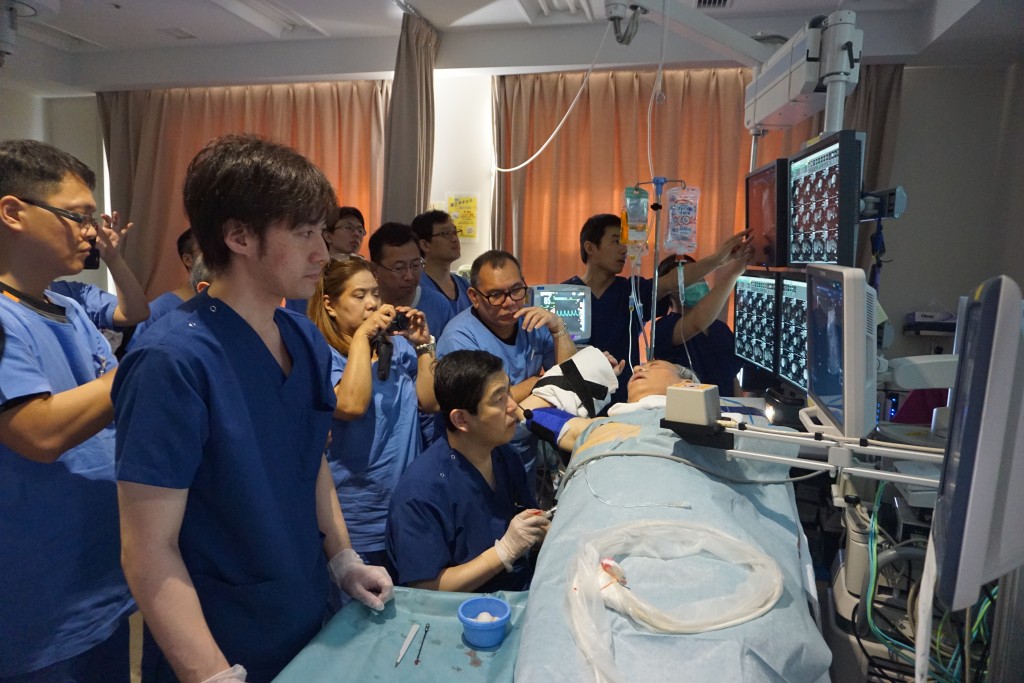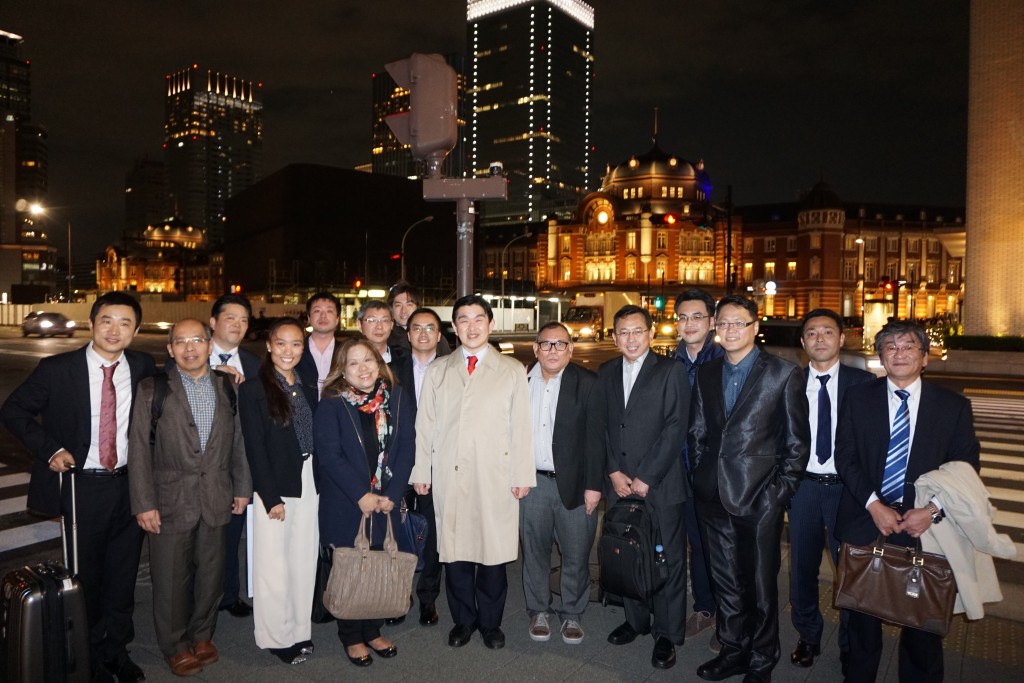Closing remarks for international RFA training program
More than 16 years have passed since RFA has become widely used in clinical practice. RFA is now performed in many facilities throughout the world. RFA has become a standard treatment modality for liver tumors as it is recommended in guidelines. RFA is potentially curative and minimally invasive if it is done properly. Unfortunately, however, since RFA is often regarded as a simple procedure, it is sometimes performed without adequate training. In medical conferences, skills and techniques in RFA have rarely been discussed squarely. Therefore, it is said that outcomes are more different from institution to institution in RFA than in surgery.
We have felt for a long time the significance to resolve this problem, therefore we have been organizing RFA training programs for Japanese doctors. This time we expanded the scope to doctors from abroad, and decided to organize the international RFA training program. We set lectures, live demonstrations, and case studies as the three main pillars for this program as is done in the domestic training programs, and we planned to have a 7 day long program for international participants. There were 13 participants in total: four doctors from China, four doctors from Taiwan, three doctors from Indonesia, and two doctors from Philippines. (Please see posts on our blog for their impression on this program.)
During their stay, the participants were astonished for many times to see our world-class RFA room facilities and skills. However, what we wanted to deliver in this seven day program was not just visible things like cutting-edge facilities, equipment, and techniques. In order to achieve better outcome in this minimally invasive procedure than in surgery, we wanted to deliver rather more invisible things, like the importance of careful pre-operative planning, reliable skills based on experience, and necessity of better post treatment image evaluation to not miss any residual cancer tissue. Furthermore, we wanted to tell that it is significantly important to have a strong will to cure the cancer, concentration toward treatment, knowledge and experience based judgment, and a sense of responsibility for patients. Actually, the participants of this program were from Joint Commission International (JCI) certified hospitals, and they may have the latest medical equipment in their hospitals. But still it may be difficult to have the same equipment soon as our hospital has. However, we wanted them to learn the importance of a strong mindset that would help cure the cancer and understand the way to perform accurate medical practices for the patients. We are more than glad if they have learnt something from this program and continue their hard work after going back to their homelands.
During the program, we performed RFA on 15 cases and ablated 28 tumors in total in five treatment days. These were a wide variety of cases: a case of newly diagnosed cancer not difficult to ablate judging from size and location, a case of a tumor just below the diaphragm requiring artificial ascites, a case of a tumor in the caudate lobe, a case of a tumor adjacent to the heart, a case of a tumor just next to portal vein or hepatic vein at porta hepatis, a case of a tumor over 5 centimeter, a case of more than five tumors, cases of hepatic metastasis from the colon cancer or the breast cancer, a case of a tumor with unclear boundaries on ultrasound which required to perform RFA under contrast enhanced ultrasound, a case in which a tumor could not be depicted on ultrasound and required to perform RFA with support of fusion imaging, and etc. From these cases, we demonstrated the importance to have appropriate patient posture, usefulness of our original dedicated probe for interventional procedures and our RFA dedicated operation table, and the way to perform ablation under guidance of Sonazoid, an ultrasound contrast agent and with multimodality fusion imaging.
In our institution, we perform RFA for cases like using artificial ascites, artificial plural infusion, contrast enhanced ultrasound, and fusion imaging on a daily basis. (In Juntendo University, we use these techniques in 45%, 7%, 57%, and 54% of the cases, respectively.) Participants were surprised at almost everything, like the treatment level of the highest volume center, latest equipment like the dedicated probe for interventional procedure and the RFA dedicated table, conduct of daily bases planning and treatment evaluation in conference (five times a week), and thorough follow-up for outpatients. Soon after every case, they asked so many questions. It must be a tight and tough schedule for them, but their eagerness and attitude did not change throughout the program. I felt their strong motivation and faith to improve their treatment in their homelands. In Japan, hospitals are generally equipped with better facilities and doctors are in better environments. However, we feel the mindset among Japanese doctors need to be more persistent like them. We want the Japanese doctors to learn something from their attitude and to be more proactive, at least when they are involved in ablation therapy.
After we finished the entire program, we got thank-you letters from participants. We are happy to feel their satisfaction. We, as an organizer, are satisfied to have these positive feedbacks as well. Some of them mentioned the program was really tough and tight. We understand the toughness, but we would like to say this is not a special week for the training program at all and we cannot skip any of the procedures we showed in the training program, at least as long as there is a patient who wants to undergo RFA treatment.
Finally, I wish all of the doctors who learned RFA in our institution will continue their hard work to improve their skills and experience, and will save a lot of patients’ lives in the future.
Shuichiro Shiina, M.D., Ph.D.
Professor, Division of Diagnostic Imaging and Interventional Oncology
Juntendo University Graduate School of Medicine
Summary of questionnaire results: Summary of the questionnaire results from all 13 participants
Questionnaire results from all 13 participants (anonymized): Questionnaire results from all 13 particpants (anonymized)

